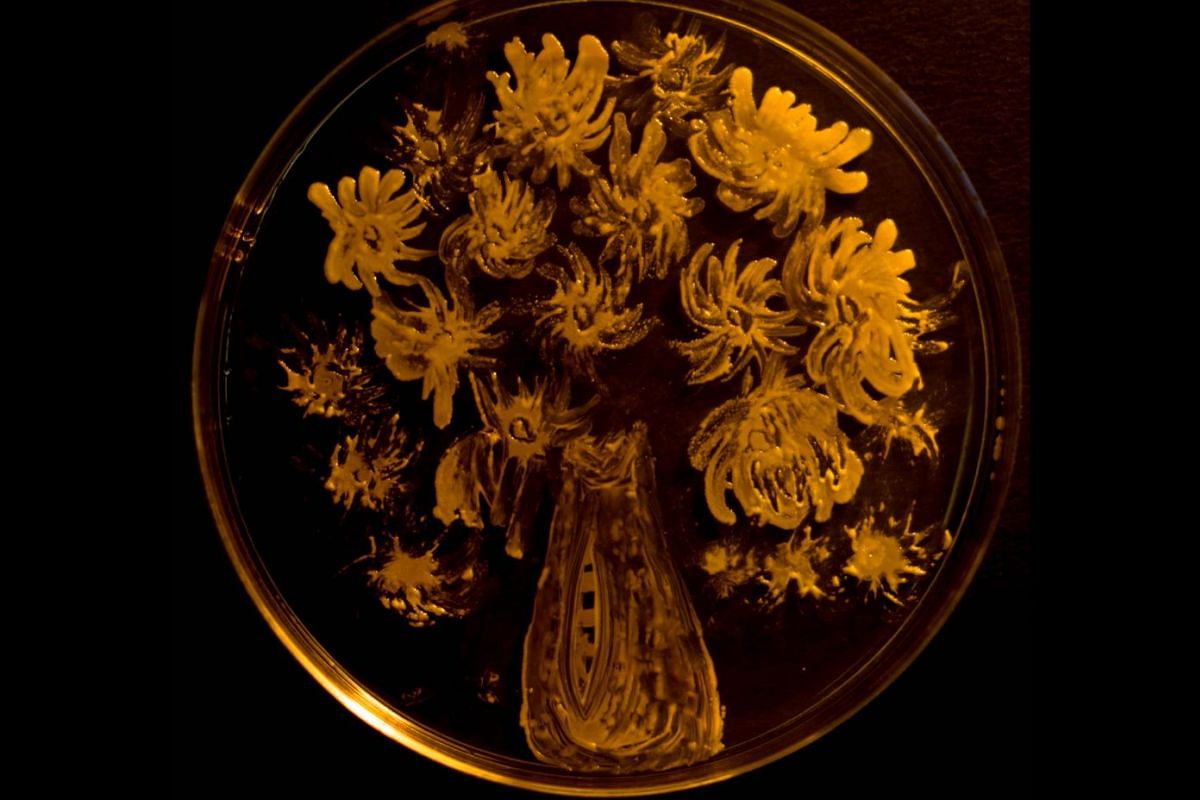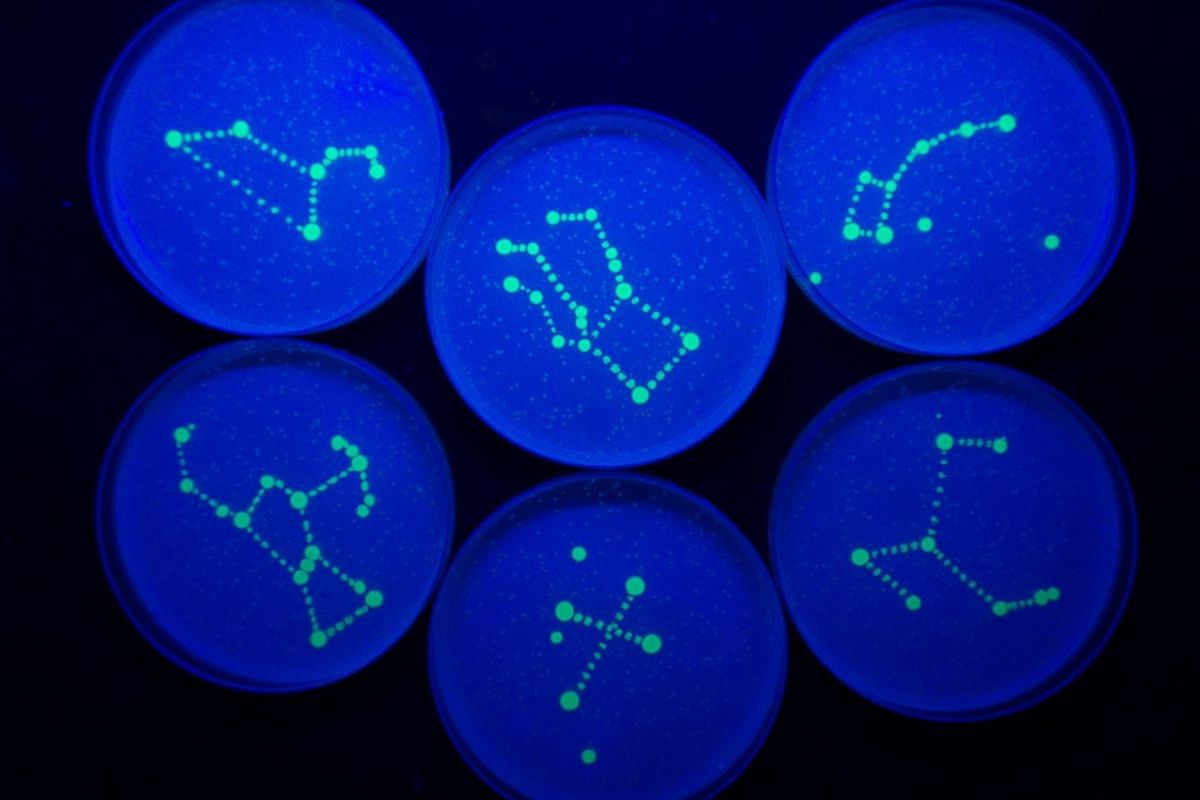Where art meets science: Microbial masterpieces
Where art meets science: Some microbiologists have gone creative with their microbes, turning their pipettes and agar-filled petri dishes into paint brushes and canvases, and creating what is known in the community as agar art. Luke Anthony Tan brings you four winning pieces from the 4th agar art contest organised by the American Society for Microbiology this year.
A BATTLE OF TWO SEASONS

The first prize for this year's agar art contest went to Agricultural University of Georgia undergraduate Ana Tsitsishvili, who describes her entry as a "battle of two seasons", winter and spring. On one side of the agar plate resides the bacteria Staphylococcus and Bacillus mycoides, both white as winter snow and growing quickly on the brain-heart infusion agar. But when they meet the beautiful spring flowers, made by Serratia marcescens, the white microbes retreat as the antibiotics produced by Serratia stunt their growth. And as winter takes its leave with the arrival of spring, flowers - of Micrococcus, Rhodotorula and their mix - bloom.
MY YELLOW VISION!

Coming in second was Dr Bornali Bhattacharjee's My Yellow Vision!, an ode to the Dutch painter Vincent Van Gogh. Dr Bhattacharjee is a research fellow at the National Institute of Biomedical Genomics in India. It has been speculated that Van Gogh suffered from a colour vision deficiency called xanthopsia, which causes an extreme vision bias for yellow. It was from such an illness that Van Gogh had painted - with just three shades of yellow - the Vase With Fifteen Sunflowers, one of his most celebrated masterpieces. In this agar art, Dr Bhattacharjee used a multidrug-resistant Staphylococcus aureus collected from the nasopharynx (the space above the soft palate at the back of the nose) of a preterm infant, to paint her own version of Vase With Sunflowers in mannitol salt agar. Dr Bhattacharjee hopes to prevent microbial resistance to antibiotics through research, and to increase awareness about the rampant use of over-the-counter antibiotics in her country through microbial art.
SUSTENANCE

Third place went to Sustenance, a collaboration between Dr Mehmet Berkmen, a senior scientist at New England Biolabs, and Ms Maria Peñil Cobo, a mixed media artist. The red string connecting the two petri dishes of Luria-Bertani agar represents the microbial communication between a mother and her child. While a foetus is inside the mother's womb, it bathes in its mother's sterile amniotic fluid and is free from microbes. But when the mother gives birth, the newborn gets a double dose of its mum's microbes. This is the baby's first set of microbes that will co-exist with its body. In this art work, the agar plate at the top depicts a mother's breast, in which the microbes were isolated by pressing an agar plate on the breasts of Ms Peñil. The plate below represents a foetus in a womb.
A SALMONELLOSIS ODYSSEY

Winning the People's Choice category was Ms Maria Laura Echarren's A Salmonellosis Odyssey, which features six constellations made from Salmonella, a bacterium which causes the food-borne illness salmonellossis. Ms Echarren is a PhD student at the Institute of Molecular and Cellular Biology of Rosario in Argentina. She believes that just as people are microscopic in the immensity of the universe, so are bacteria to our naked eye, and this inspired her to create a "micro-universe" of Salmonella constellations. In this work, Ms Echarren used a naturally-occurring strain of Salmonella to make the stars in the background. To make the constellations, she used a genetically-modified strain of Salmonella which makes green-flourescent proteins that give a soft, green glow under ultraviolet light. Each "dot" of the constellation is made by a single colony of Salmonella. The constellations of the Northern Hemisphere are (from the top left to top right): Leo, Pegasus and Ursa Minor. And from the Southern Hemisphere (bottom left to bottom right): Orion, Southern Crux and Phoenix.
Correction note: This story has been corrected to say that Sustenance was a collaboration between Dr Mehmet Berkmen and Ms Maria Peñil Cobo.
Join ST's Telegram channel and get the latest breaking news delivered to you.
A version of this article appeared in the print edition of The Straits Times on June 21, 2018, with the headline Where art meets science: Microbial masterpieces. Subscribe
